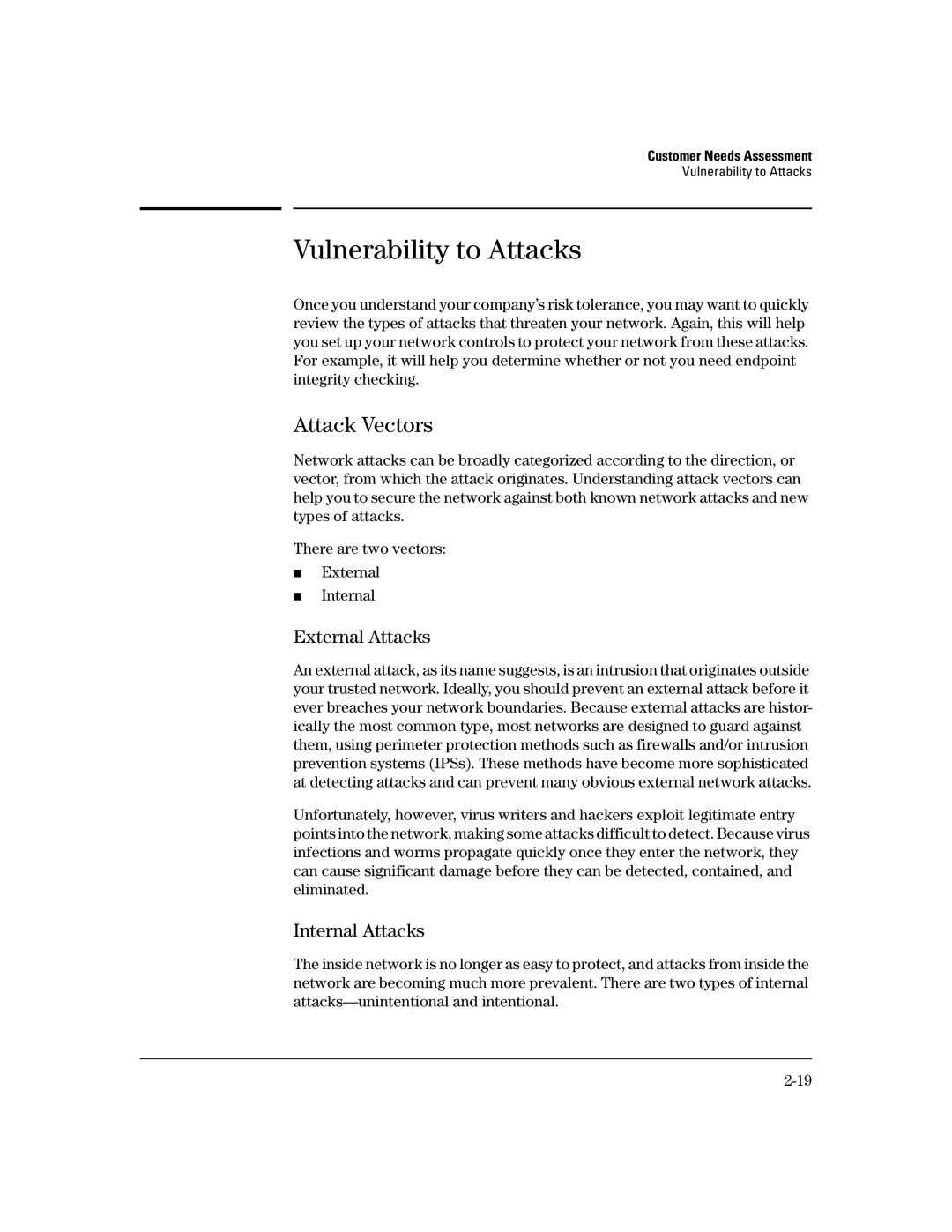
Customer Needs Assessment
Vulnerability to Attacks
Vulnerability to Attacks
Once you understand your company’s risk tolerance, you may want to quickly review the types of attacks that threaten your network. Again, this will help you set up your network controls to protect your network from these attacks. For example, it will help you determine whether or not you need endpoint integrity checking.
Attack Vectors
Network attacks can be broadly categorized according to the direction, or vector, from which the attack originates. Understanding attack vectors can help you to secure the network against both known network attacks and new types of attacks.
There are two vectors:
■External
■Internal
External Attacks
An external attack, as its name suggests, is an intrusion that originates outside your trusted network. Ideally, you should prevent an external attack before it ever breaches your network boundaries. Because external attacks are histor- ically the most common type, most networks are designed to guard against them, using perimeter protection methods such as firewalls and/or intrusion prevention systems (IPSs). These methods have become more sophisticated at detecting attacks and can prevent many obvious external network attacks.
Unfortunately, however, virus writers and hackers exploit legitimate entry points into the network, making some attacks difficult to detect. Because virus infections and worms propagate quickly once they enter the network, they can cause significant damage before they can be detected, contained, and eliminated.
Internal Attacks
The inside network is no longer as easy to protect, and attacks from inside the network are becoming much more prevalent. There are two types of internal
